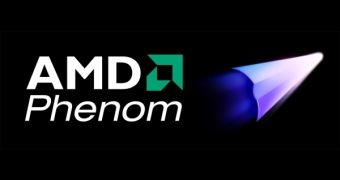AMD has announced a silicon update to its Phenom X3 triple-core processors that removes the ill-fated translation lookaside buffer bug. The new 8450, 8650, and 8750 models will be based on the B3 silicon revision and are expected to replace and supplement the currently available 8400 and 8600 models.
According to the chip manufacturer, the Phenom X3 8750 reaches 2.4 GHz and sells for $195, while the lower end 8650 (2.3GHz) and the 8450 (2.1GHz) sell for $165 and $145, respectively. Another interesting update is the addition of the low-power quad-core Phenom X4 9100e processor that comes in a thermal envelope of 65 watts, as compared to the 95 watts of the standard X4 family.
The chip manufacturer plans to introduce the Phenom X3 chips in systems built around its 780G chipset with integrated graphics, as a low-budget alternative for gaming systems. However, the vast majority of Phenom X3-powered systems come with Nvidia graphics solutions.
"On one side, we have Nvidia saying that the only thing that matters is graphics. On the other side, Intel is saying that the only thing that matters is the processor," said Brent Berry, product marketing manager for the chip manufacturer. "AMD offers a balanced platform that doesn't over-emphasize one really expensive component over another really expensive component," he continued.
The introduction of the bug-free tri-core chips might be an issue for Arch-rival Intel. Given the fact that AMD plans to pair its sub-$200 processors with advanced graphics cores built in the new 780G chipset, Intel is forced to use the G35 chipset as an alternative. Both CPU manufacturer have near-enhusiast-level offerings, that can achieve almost the same performance as the higher-end 790G and P35/X48 chipsets.
However, Intel is in a weak position when it comes to high-quality graphics cores. ATI is out of discussion, as it belongs to AMD, and at the same time, the brewing war between Nvidia and Intel leaves no room for collaboration. Shortly put, Intel will not get higher-end graphics cores from either ATI or Nvidia.
OEMs have to take a tough decision whether to go with a complete AMD platform or to complement Intel's CPU offering with a discrete graphics card from AMD or Nvidia. More than that, no matter what OEMs may choose, AMD would get a sales boost.

 14 DAY TRIAL //
14 DAY TRIAL //